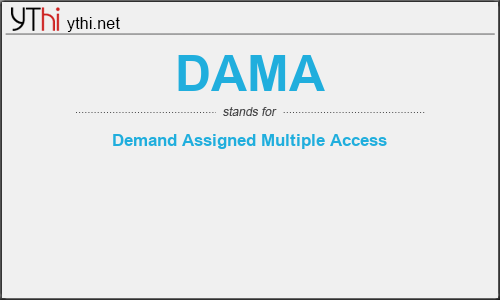What does DAMA mean? What is the full form of DAMA?
The Full Form of DAMA is Demand Assigned Multiple Access.
Demand Assigned Multiple Access (DAMA) is a technology used to assign a channel to clients that don’t need to use it constantly. DAMA systems assign communication channels based on news issued from user terminals to a network security system. When the circuit is no longer in use, the channels are again returned to the central pool for reassignment to other users.
Channels are typically a pair of carrier frequencies (one for transmit and one for receive), but can be other fixed bandwidth resources such as timeslots in a TDMA burst plan or even physical party line channels. Once a channel is allocated to a given pair of nodes, it is not available to other users in the network until their session is finished.
It allows utilizing of one channel (radio or baseband frequency, timeslot, etc.) by many users sequentially at different times. This technology is mainly useful with sparsely used networks of transient clients, as opposed to PAMA (Permanently Assigned Multiple Access). By using DAMA technology the number of separate nodes that can use a limited pool of circuits can be greatly increased at the expense of no longer being able to provide simultaneous access for all possible pairs of nodes. A five-channel DAMA network can only have five simultaneous conversations but could have any number of nodes. A five-channel PAMA network permanently supports five simultaneous conversations, with channel ownership remaining with their permanently assigned nodes even when idle.
DAMA
means
Demand Assigned Multiple Access![]()
Translate Demand Assigned Multiple Access to other language.


Leave a Reply
You must be logged in to post a comment.